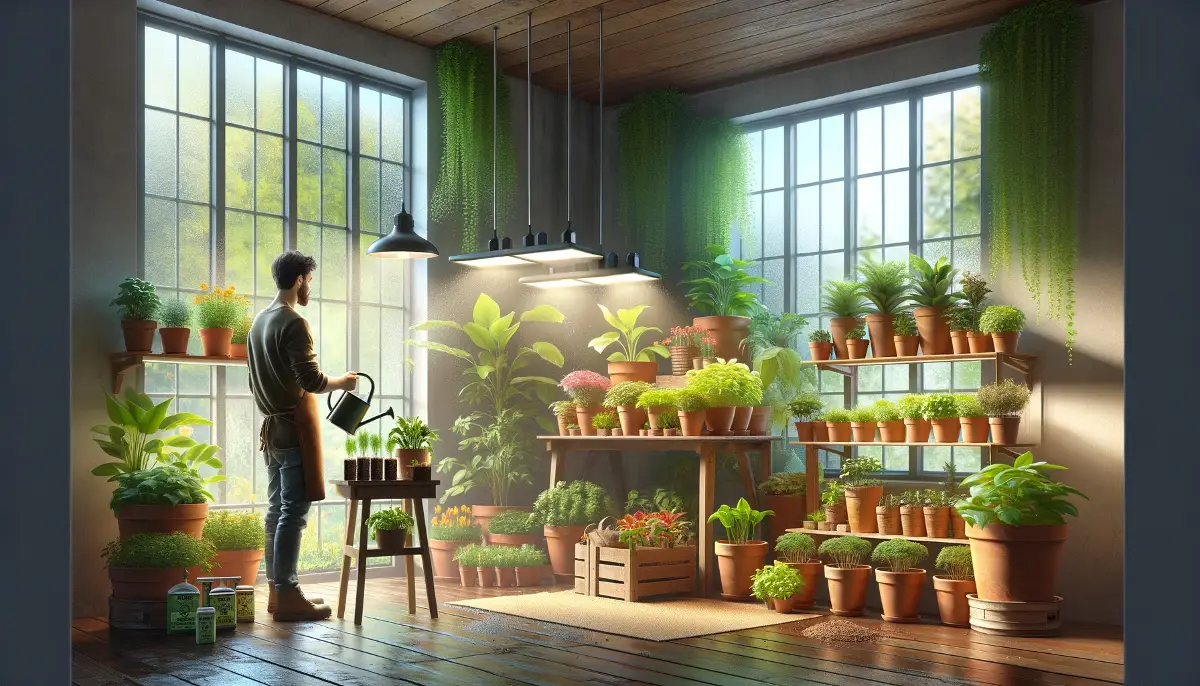Houseplants, like living beings, grow and evolve over time, necessitating occasional changes to their living conditions to thrive. Just as children outgrow their clothes, houseplants outgrow their pots. The process of a plant outgrowing its pot is not just about physical space but also about the plant’s ability to access necessary nutrients and water for its growth.
When a plant becomes pot-bound, its roots have consumed all available space within the pot, leading to a variety of growth and health issues.
Signs Your Plant Has Outgrown Its Pot
Visible Roots: Roots may start to appear on the surface of the soil or protrude through the drainage holes at the bottom of the pot, indicating a lack of space for further root expansion.
Watering Issues: You might notice that water runs through the pot quickly, without retaining moisture, or water sits on top of the soil, indicating poor soil structure and inadequate water absorption.
Stunted Growth and Discoloration: A noticeable slowdown in growth or the discoloration of leaves can suggest that the plant is not receiving the nutrients or water it needs, often a consequence of cramped root conditions.
How to Repot Your Houseplant
Repotting is the primary solution to address a plant that has outgrown its pot. It involves moving the plant to a larger pot with fresh soil, providing the plant with more space to grow and access to new nutrients. Here’s a summarized guide on repotting:
Select the Right Pot: Choose a new pot that is slightly larger than the current one—ideally, 2-4 inches larger in diameter—to avoid overwhelming the plant with too much soil, which can lead to waterlogging and root rot.
Prepare the Plant: Gently remove the plant from its current pot, being careful not to damage the roots. If the plant is resistant, you might need to tap the pot or use a tool to ease it out.
Prune the Roots: If the roots are densely packed or there are any dead roots, trim them carefully. This will encourage healthier growth and ease the plant’s transition to its new pot.
Repot with Fresh Soil: Place a layer of fresh potting soil in the new pot, position the plant at the right height, and fill around it with more soil, pressing down lightly to remove air pockets. Water the plant well after repotting.
Aftercare for Your Indoor Plants
The transition to a new pot can be stressful for plants. To help them adjust:
- Place the repotted plant in a shaded area for about a week to minimize stress.
- Avoid fertilizing until the plant has shown signs of new growth, indicating that it has settled into its new home.
Repotting plants is a nurturing process that not only addresses immediate space constraints but also revitalizes your plant by providing fresh soil and room for growth. By understanding the signs of a plant outgrowing its pot and knowing how to carefully transition it to a new home, you can ensure your green companions remain healthy and vibrant for years to come.
FAQs on Repotting Houseplants
How do I know if my plant has outgrown its pot?
There are several signs to look for, including visible roots at the surface or coming out of drainage holes, the plant drying out quickly after watering, stunted growth, and leaves turning yellow or wilting. If you notice any of these signs, it’s likely time to consider repotting.
How often should I repot my houseplants?
Generally, houseplants need to be repotted every 2-3 years, but this can vary based on the plant’s growth rate and conditions. Fast-growing plants may need to be repotted more frequently, while slow-growers can go longer without needing a new pot.
What size pot should I use when repotting?
Choose a pot that is 2-4 inches larger in diameter than the current one. This size increase provides enough room for new root growth without leaving so much space that the soil retains too much water, which can lead to root rot.
What type of soil should I use for repotting?
Always use fresh, high-quality potting soil. Avoid using garden soil, as it can be too heavy and may contain pests or diseases. Potting soil is designed to provide the right balance of drainage and nutrient retention for houseplants.
Can I just add more soil to the top of the pot instead of repotting?
Adding soil to the top of the pot does not address the issue of restricted root growth and can actually exacerbate problems by burying the stem too deeply, potentially leading to rot. Repotting into a larger pot is necessary to give the roots more space.
What should I do with the roots when repotting?
Gently loosen the roots before placing the plant in its new pot. If the roots are heavily tangled or circling, you can carefully untangle them or even trim slightly to encourage growth in the new space. However, be gentle to avoid damaging the root system.
How do I care for a plant after repotting?
After repotting, water the plant thoroughly and place it in a partially shaded area to recover. Avoid fertilizing for at least a month to prevent overwhelming the plant while it adjusts to its new pot. Monitor the plant’s health and gradually reintroduce it to its regular care routine








